Notes
David Schalliol from Chicago: How a 400 Family Neighborhood Became Urban Prairie
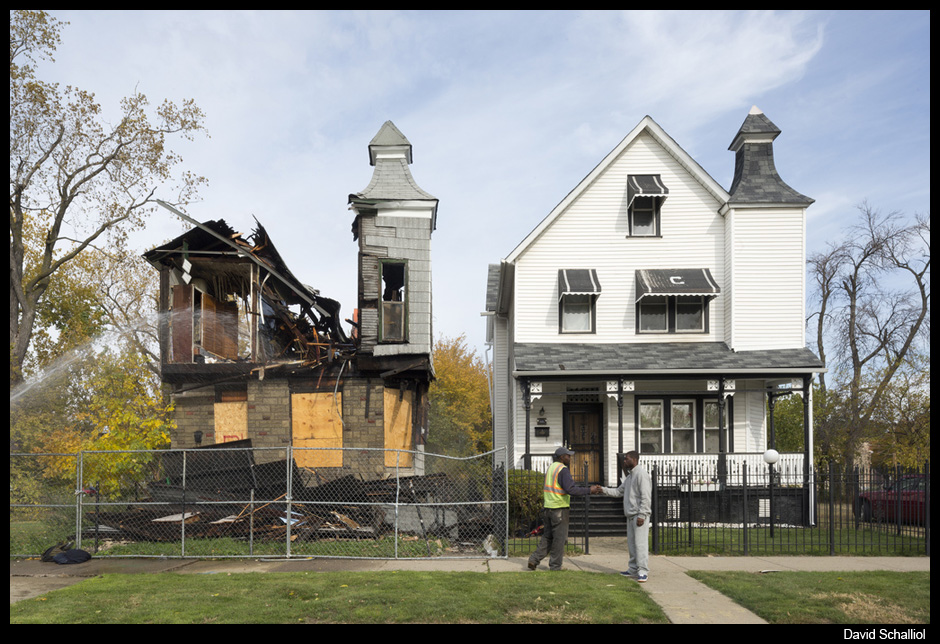 57th Place (The Area), October 2012: A resident greets a demolition worker while one of two twin buildings is torn down.
57th Place (The Area), October 2012: A resident greets a demolition worker while one of two twin buildings is torn down.
In early 2012 I was working on a photographic survey of the hundreds of buildings to be demolished in Chicago that year. Despite 1,154 buildings razed in 2011, there was (and remains) very little discussion of what that loss meant, especially considering that most of those structures wouldn’t be replaced for years, if ever. So nearly every day, I woke up, checked the demolition permits, and then went out to try to document a handful of those buildings before they met the wrecking ball.
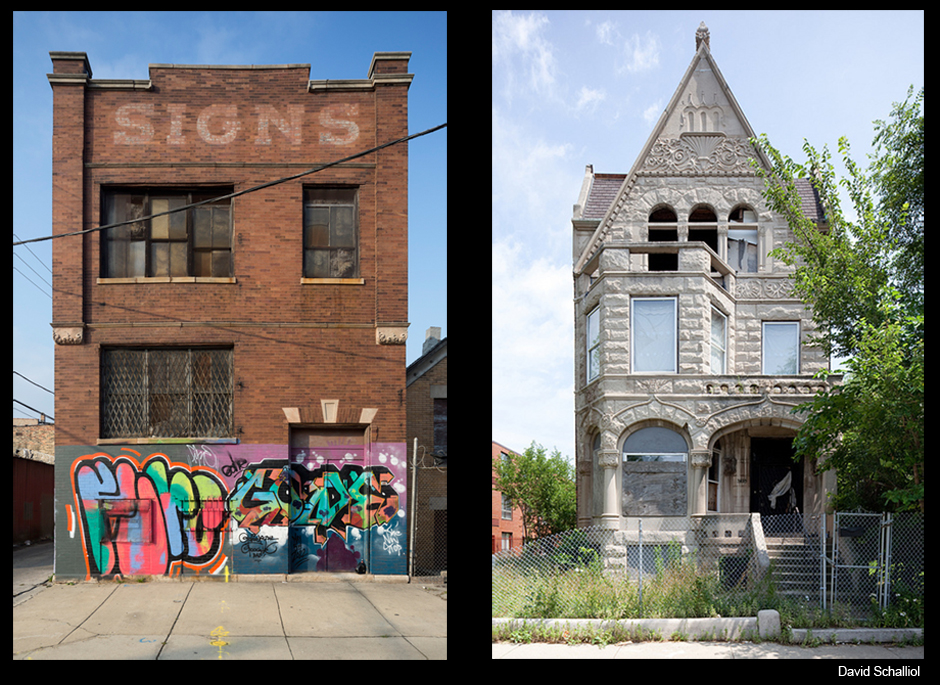 Left: 2133 S. Troy St. (To be Demolished), November 2012. This property was purchased along with 2138 and 2142 S. Troy for $400,000 on 04/08/2012. Other adjacent parcels were also simultaneously acquired. A representative of the owner claimed that no construction was planned on the site in the near future. Right: 3639 S. Michigan Ave. This block of South Michigan Avenue was once the home of many grand residences, but it has been radically transformed by institutional and low income building construction in the last 60 years. This building is one of only six remaining original buildings on the block.
Left: 2133 S. Troy St. (To be Demolished), November 2012. This property was purchased along with 2138 and 2142 S. Troy for $400,000 on 04/08/2012. Other adjacent parcels were also simultaneously acquired. A representative of the owner claimed that no construction was planned on the site in the near future. Right: 3639 S. Michigan Ave. This block of South Michigan Avenue was once the home of many grand residences, but it has been radically transformed by institutional and low income building construction in the last 60 years. This building is one of only six remaining original buildings on the block.
One morning, the permits took me to a trio of buildings in a corner of Englewood. The neighborhood is one of the South Side areas hardest hit by deindustrialization, divestment and institutional racism. As a result, Englewood is no stranger to demolition. Everything from insurance fraud-motivated arson to foreclosure evictions to city anti-gang programs has chipped away, leaving many blocks marked by derelict lots – and buildings that will soon join them.
An interactive map locating the 100 buildings I documented during the project.
Still, the demolition of three houses within sight of each other was an anomaly. Having studied a now-defunct city demolition program there a few years back, I was astounded by the change. What was once a relatively intact neighborhood was fast turning into an urban prairie. One of the three houses was the sole building on its block.
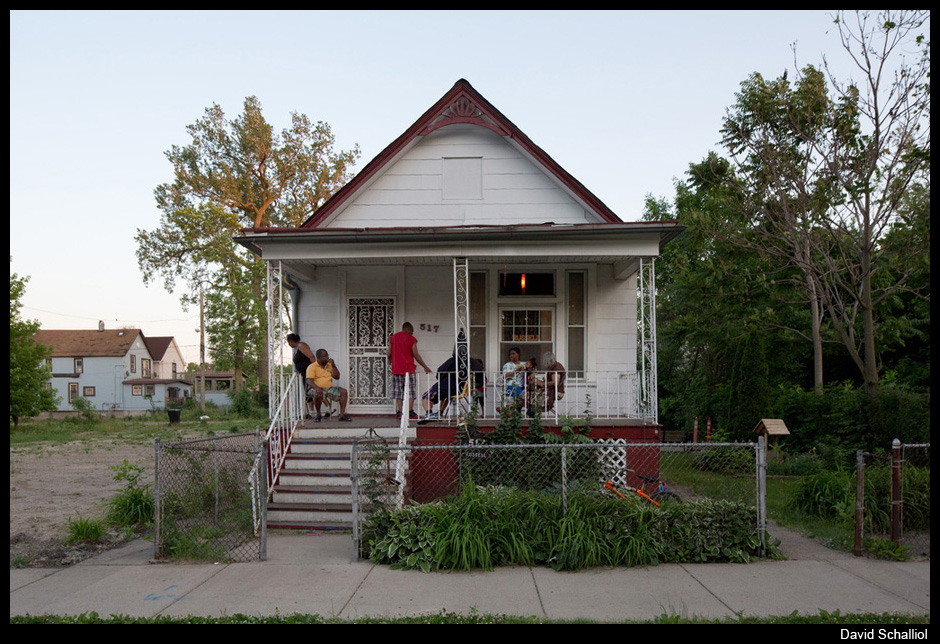 57th Place (The Area), October 2012
57th Place (The Area), October 2012
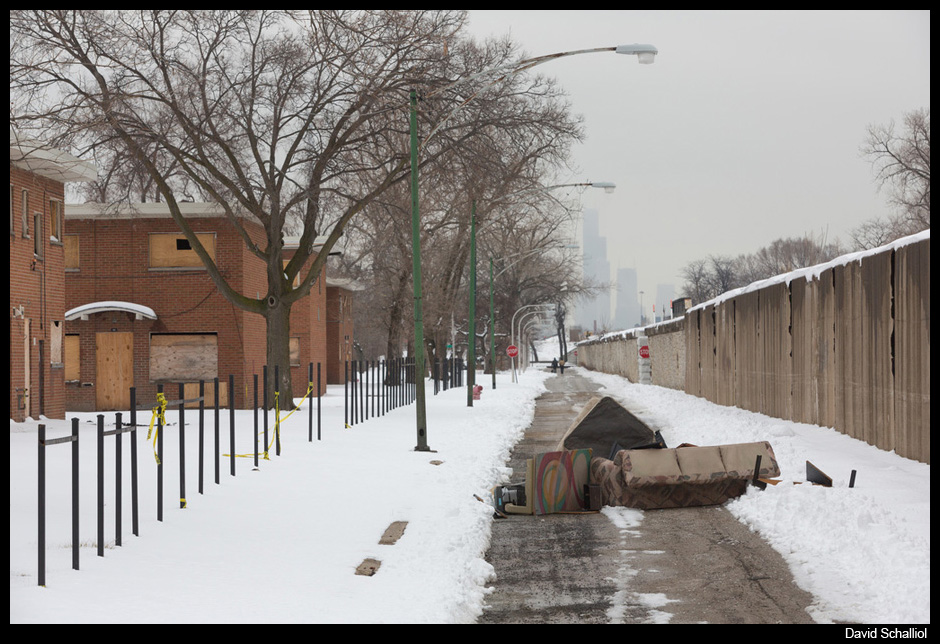 An illegally dumped pile of furniture blocks the street between a shuttered public housing development and a railroad embankment.
An illegally dumped pile of furniture blocks the street between a shuttered public housing development and a railroad embankment.
Doing some digging I discovered Norfolk Southern, like many other transportation companies, was pressed for more shipping container, truck and train staging space at its 47th Street yard. Rather than move its facilities to an “exurban community” to do “greenfield” development, the company elected to “double down” and expand its terminal.
Of course, expanding a freight yard in the middle of the country’s third largest city isn’t simply a matter of construction. Instead, land and streets would need to be acquired and more than 400 families would need to be displaced before the project could begin. While the company had publicized its expansion six months before and started covertly acquiring property several years earlier, there were only two newspaper articles about the expansion. Most of the neighborhood was still unsure about what was actually happening. Early on, it was just as common for someone to ask me what was happening as it was for me to ask them.
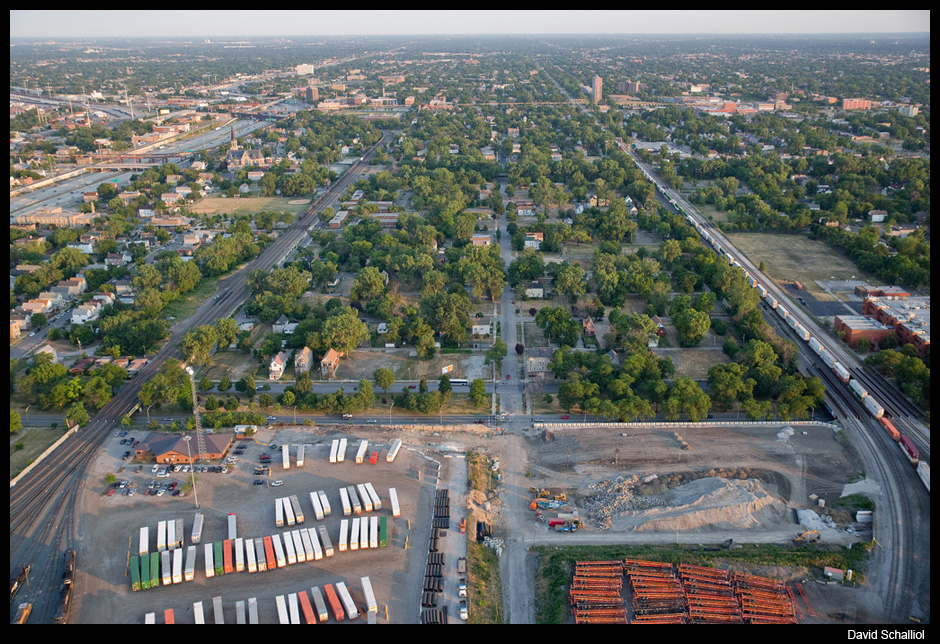 Looking south into the neighborhood from Norfolk Southern’s 47th Street intermodal terminal (The Area), June 2012.
Looking south into the neighborhood from Norfolk Southern’s 47th Street intermodal terminal (The Area), June 2012.
As a sociology PhD student, my initial inclination was to simply expand my demolition documentation project to include every building in the neighborhood; however, my interest in the area evolved with each conversation with a neighborhood resident, demolition worker and the occasional railroad representative. Rather than study the buildings for the social process, I decided to embed myself in the community to understand the story in a more personal way. The result is I am now working on three overlapping projects in the area: a photography series, a documentary film and a theoretical investigation.
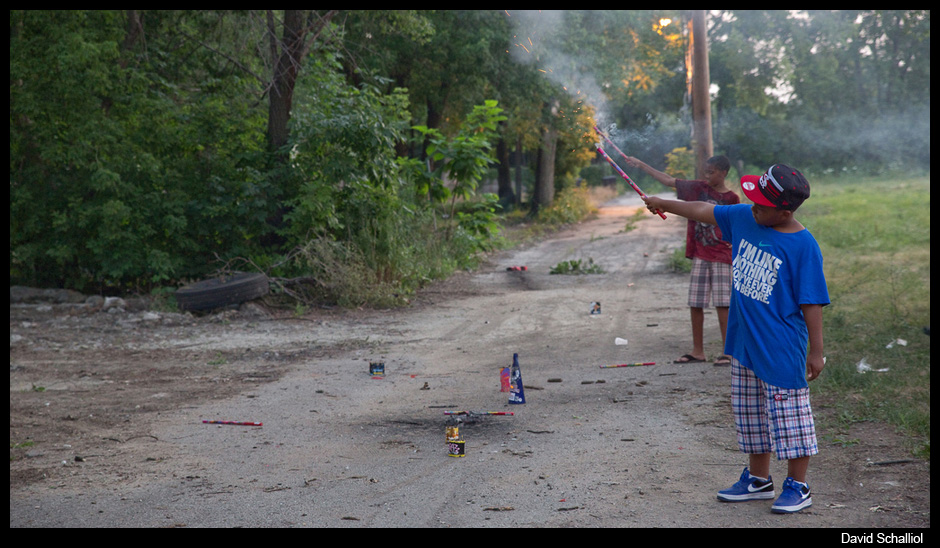 Local children shoot Roman candles in an alley during the neighborhood’s annual 4th of July celebration.
Local children shoot Roman candles in an alley during the neighborhood’s annual 4th of July celebration.
Pursuing these projects means I am now constantly thinking about the nature of my practice — including how to intertwine sociological research with photography and video. I still feel rooted in my orientation towards the world, but nearly everything else about my process is in some kind of flux. In the meantime, while my work has taken me all around the country, I now find myself concentrating exclusively on this small neighborhood only three miles from my home. This series will explore some of the puzzles that emerge.
PHOTOGRAPHS: David Schalliol


Reactions
Comments Powered by Disqus